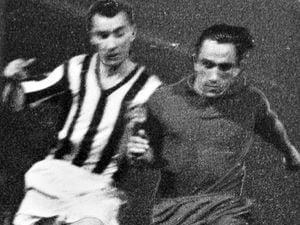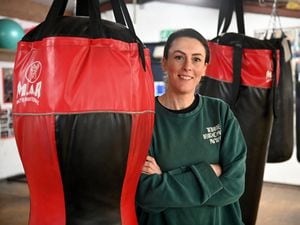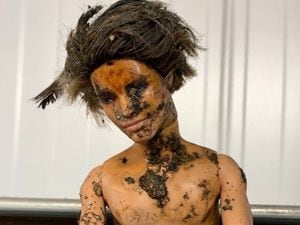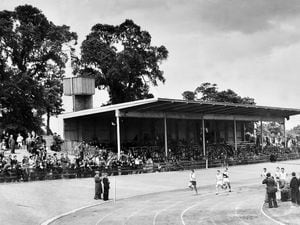Gerry's magnificent picture legacy after a life through a lens
Gerry Tredwell, at 97 the oldest and longest-serving member of Wolverhampton Photographic Society, has died – but just look at the photographic gems he has left behind.
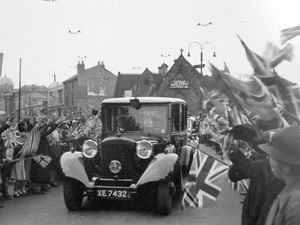
Gerry's life through a lens began in spectacular fashion at the age of 15 when he stepped into the road in front of a royal car to capture a memorable image of the visit of Queen Mary to Wolverhampton back in 1939.
And since then he amassed a collection of countless images which have been featured in publications and local, national, and international exhibitions.
Some of his photographs are rare and historic views of long-lost townscapes in Wolverhampton.
What better way to remember Gerry than for us to showcase some of his work?

He had joined the photographic society in 1945. Made an honorary life member, his membership ran for an amazing 76 years, although he had been unable to attend for some years due to ill health.
Gerald Tredwell, from Sedgley, was born in November 1923, and lived for the earlier part of his life in Sherwood Street, Wolverhampton.
His funeral earlier this month was at Gornal Wood crematorium and among the mourners were Roy Hawthorne and John Holt, who represented the society. Gerry died just a month after his twin brother, Ronald Tredwell.
Gerry leaves a widow, Beryl, two daughters, and five grandchildren.
"He was interested in photography from childhood, being introduced to it quite early by his father. His brother Ronald was interested as well," said Mrs Tredwell.
"He went to the municipal school in Wolverhampton and was a design engineer at Josiah Parkes at Willenhall, part of the Chubb group. He liked Leicas, and Minolta cameras.

"He did not like the digital age in cameras at all. At the end of his life he decided he was going to have a digital camera. He enjoyed using it but always thought black and white film photography was much better."
His subjects were many and varied.
"He liked suddenly seeing something and taking a picture. He liked patterns in his work."
In the 1950s he would go to Attingham Hall, near Shrewsbury, which had become an adult education centre run by Sir George Trevelyan and also staged exhibitions.

"I have boxes and boxes of slides, and cupboards full of photographs."
Mrs Tredwell – the couple married in 1966 – says she does not know what to do with them.
"I don't know who would want them."
Apart from the showpiece photographs, with those which went to exhibitions stored in large and heavy black folders, there are also many boxes of family photographs.

Rob Cowell, chairman of the society, said in a tribute in its newsletter that Gerry was a much loved and highly talented honorary member.
"Roy Hawthorne, a good friend of Gerry, told us that he was most well-known for one of his very first photographs taken when he was just 15 of Queen Mary on a visit to Wolverhampton, which even made it into the Express & Star.
"That photograph was taken on July 2, 1939, when huge crowds gathered in Chapel Ash to greet the Queen on her way to visit Patshull Park. As the Queen’s car approached, that young photographer stepped out almost in front of it to get his picture."
A colourised version of this photo showing the approaching royal Daimler, which was taken with a Kodak folding camera and sparked Gerry's lifelong interest in photography, was used as the cover image of a book titled 'Images of Wolverhampton'."

Rob said: "While a member he participated in many events and activities with the club and was part of the 1988 committee responsible for celebrating the Wolverhampton Photographic Society centenary.
"He was also part of the group who researched the history of photography in Wolverhampton, which you can read about on our website wolverhamptonps.co.uk."

Gerry's father, John Tredwell, was a soldier of the Great War who married a French girl, Yvonne, and became a railway worker in Wolverhampton. In the 1920s John managed to buy a folding Kodak camera and a few rolls of film per year. His interest was to rub off on Gerry.
The French connection took the couple and their twin sons on annual trips to the continent.
Long before cameras with do-everything-for-you functions, Gerry learned priceless skills of instinctive manual photography, including an ability to assess correct exposure, which would stand him in good stead.
He liked working in black and white, and it was the light and shade falling on scenes in his native Black Country that inspired his finest work.
In a 2002 interview in advance of another exhibition, this time at Wolverhampton Central Library, he picked out one of his highlights, which was in the early 1950s when he took his camera to Brick Kiln Croft, Wolverhampton, as the demolition men moved in, to record a series of historic and evocative scenes.

As his exhibition successes mounted, he had the honour of sharing a gallery wall with one of his heroes, the legendary French photographer Henri Cartier Bresson.
Gerry usually worked with an automatic Minolta camera with full manual override and at that time was still steering well clear of digital photography, although his attitude softened as the quality of digital improved.
His advice to newcomers to photography was to keep things simple, and not be overburdened with too much kit.


